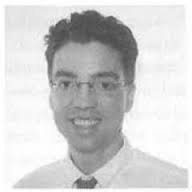A large number of people might apply to be President, perhaps 1,000 or more. If so, they can go first to a screening jury, which could winnow the number down to perhaps 15 candidates who would then go to the presidential selection jury for a final choice.
It is easy enough to imagine how a screening jury might winnow down hundreds, or even thousands, of applicants to the 15 who have the most support. For example, applicants could be randomly selected into groups of 40, with each group then being considered by a small screening jury of perhaps 50 citizens. Each of these juries could, after considering the candidates, give them a letter grade from A to F, with an A meaning they would make an excellent President. Any candidate not getting an A from say at least 35% of the jurors would be eliminated. Further consideration of the remaining candidates would continue, with the juries of 50 combining into larger juries, and the candidates continuing to be eliminated by rounds of letter grade voting, and votes in which the candidate with the fewest votes is eliminated, until only 15 are left.
State governors, Congress and state legislatures could all be chosen by juries in a similar way. Each member of the House of Representatives and a state legislature could be chosen by the majority vote of a jury drawn from the member's district. Alternatively, they could be chosen on a basis of multi-member electoral districts, perhaps three-member districts, using a PR (proportional representation) method such as STV (single transferable vote).
The President needs to be chosen by a jury large enough to be an accurate cross-section of the public, so that the jurors will be a good stand-in for the people as a whole. However, there is perhaps no need for the juries selecting the House of Representatives to be large. Even if each Representative is chosen by a jury of just 25 citizens, overall the 435 members of the House would be chosen by 10,875 jurors, large enough to be a very accurate cross-section of the American public. The same concept, of course, applies to state legislatures.
Selection by jury would put all those seeking a political office on a level playing field, or at least far more so than popular election does. Because the applicants appear before the jurors directly face to face and at length, they would have no need to spend a fortune on advertising and campaign staff to reach out to the entire electorate. Candidates with not a single moneyed interest or billionaire backing them, and with no backing from a political party, would be on an equal footing with a candidate backed by big business interests, billionaires and one of the two main political parties. Candidates ignored by the media would be on a level playing field with celebrities and media favorites. Fox, MSNBC and alternative media viewers would all hear from the candidates directly and unfiltered. The jurors would have an open democratic choice of candidates uncurtailed by big money interests, political parties and the media.
Members of Congress would no longer need to spend much of their working time raising election funds. Instead, they would be able to focus on their job and serving the public.
Politicians would be out from under the thumb of moneyed interests, billionaires and party establishments. America would have a genuinely democratic political system based on informed rule by the people.
Juries would embody the equality of citizens as each citizen would have the same chance of being randomly sampled as any other, and, unlike in a popular election, younger citizens, and all other portions of the public, would be represented in proportion to their number.
(Note: You can view every article as one long page if you sign up as an Advocate Member, or higher).





